Now that I’ve reviewed all twelve of the original 3″ Replica Toy Fish figures (here, here, here, and here) I will start taking the opportunity to go into the figures that were released later. There was no specific release schedule, or indeed, any announced waves of releases. From what I could work out based on purchasing records, there were a number of figures released in 2015, the first assortment coming out for April. The species that were released didn’t seem to have much in the way of theme (with a later exception), it just seemed a little random and I’m not sure how those decisions happened. About a year or so later RTF pivoted to focus on Toy Fish Factory, clearing out what was left by 2017. One of the first new figures was today’s model, the brown trout Salmo trutta. From this point on I’ll just discuss the figures one at a time–a little less reading per post, and kind of reflects the random nature of those releases!
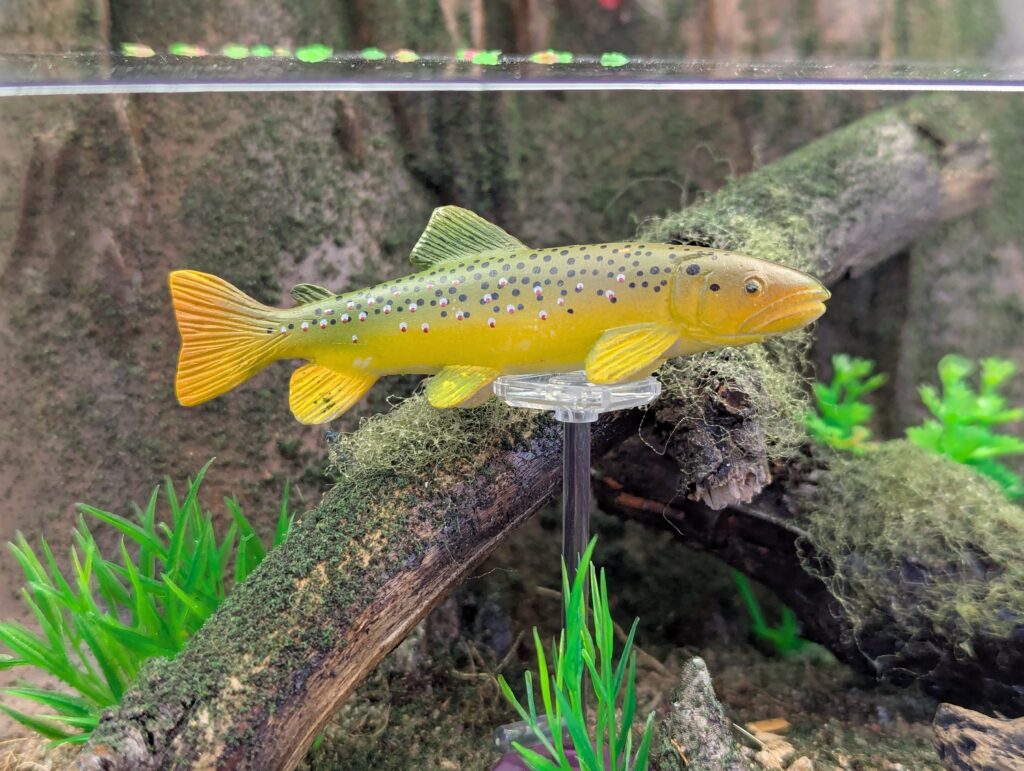
The brown trout is a very familiar fish originally found in and around much of Europe as far north as Iceland, parts of the Middle East as far east as Afghanistan and Pakistan to the Aral Sea, and the Atlas Mountain region of north Africa, including coastal areas of the Arctic and Atlantic Oceans, but has now been spread to much of the world through introductions. They have three ecotypes, ‘river trout’ S. t. morph fario, ‘lake trout’ S. t. morph lacustris (not to be confused with the char species lake trout, Salvelinus namaycush) and ‘sea trout’ S. t. morph trutta, an anadromous form; the three ecotypes can overlap and appear genetically identical, so those are not subspecies.
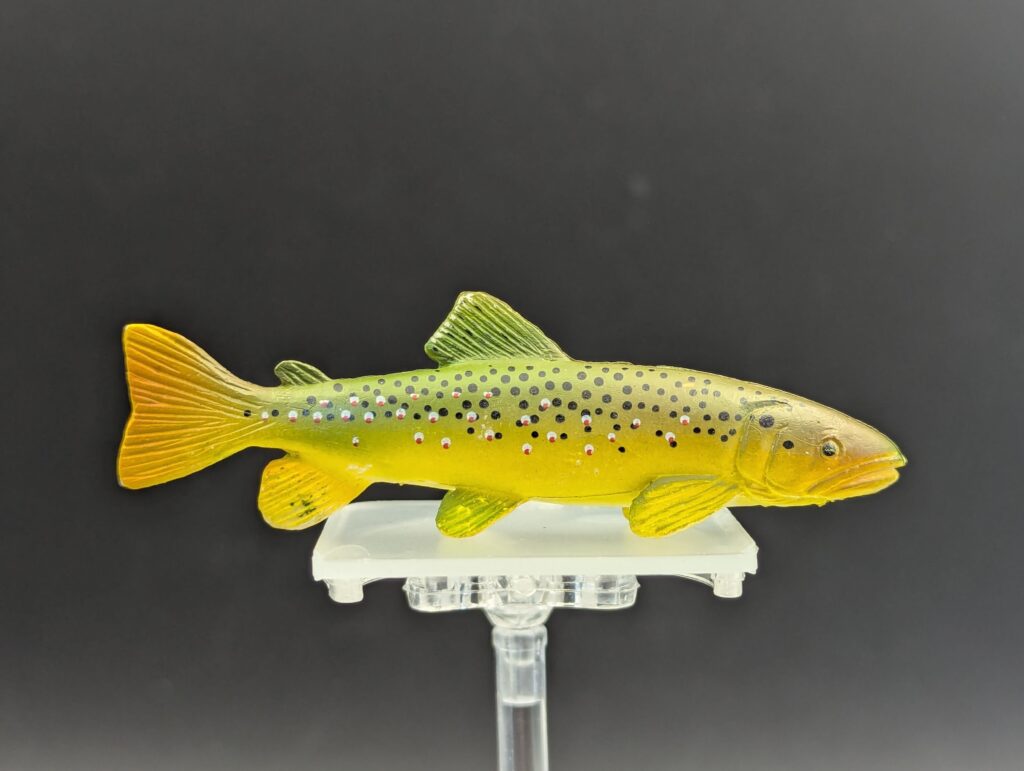
Brown trout are very aggressive predators and highly adaptable, as long as water temperatures remain cool enough, and their presence in non-native habitat can have a very detrimental effect on local fish populations. Behaviourally, brown trout are predators, primarily feeding on arthropods and other invertebrates until they are larger and switch to piscivory, as well as eggs and spawn of other fish–one of the ways they outcompete native species. They can be large fish, up to 140cm (55inches) long, but more commonly 70cm (28inches) or so. Overall the species is listed as Least Concern by the IUCN, but may be locally imperiled by adverse habitat.
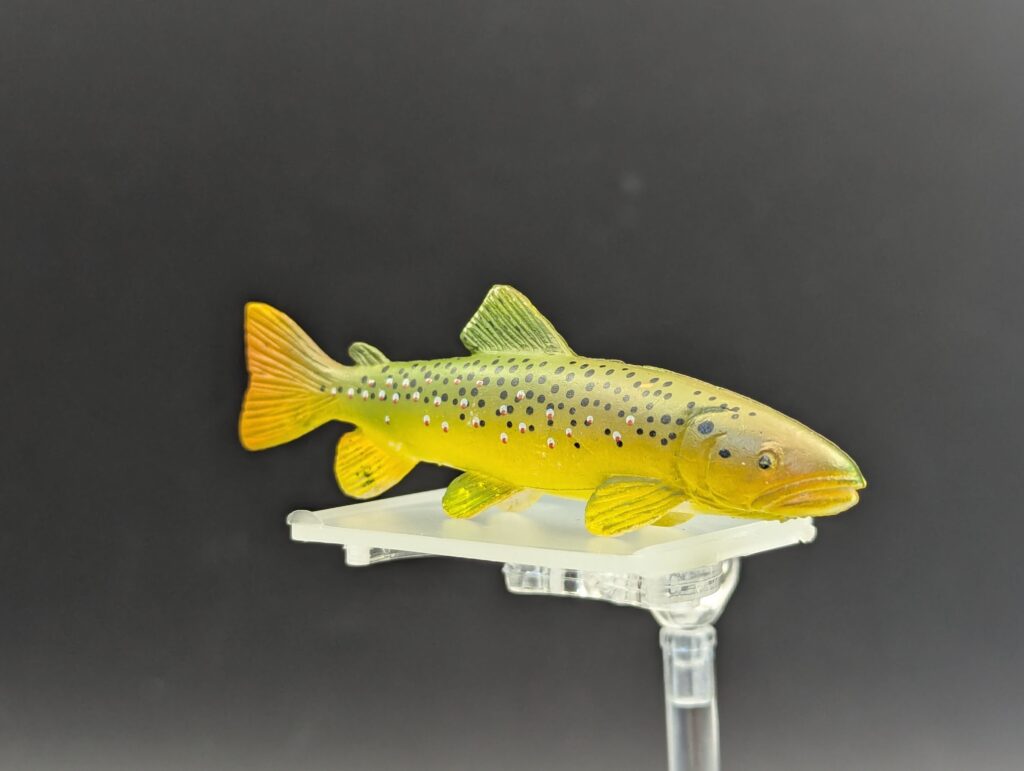
The figure is very trout or salmon shaped of course, more narrowly sculpted than the brook trout, with a more pointed snout and fusiform body; this shape would likely indicate an individual that is not fully grown, or may reflect it’s habitat, as some brown trout can be very thick and hefty depending on environment. The upper lip hangs slightly over the lower jaw, and the mouth is also very large, extending past the eye. The finnage is fully extended, with small rounded pectorals and pelvic fins, and the anal fin is very large, in keeping with brown trout finnage. The dorsal fin is large and squared, and there is a very small adipose fin just before the tail. The tail itself is large with only a small notch in the centre. All fins have have fin rays clearly sculpted (although it does not appear to reflect a real number of rays).
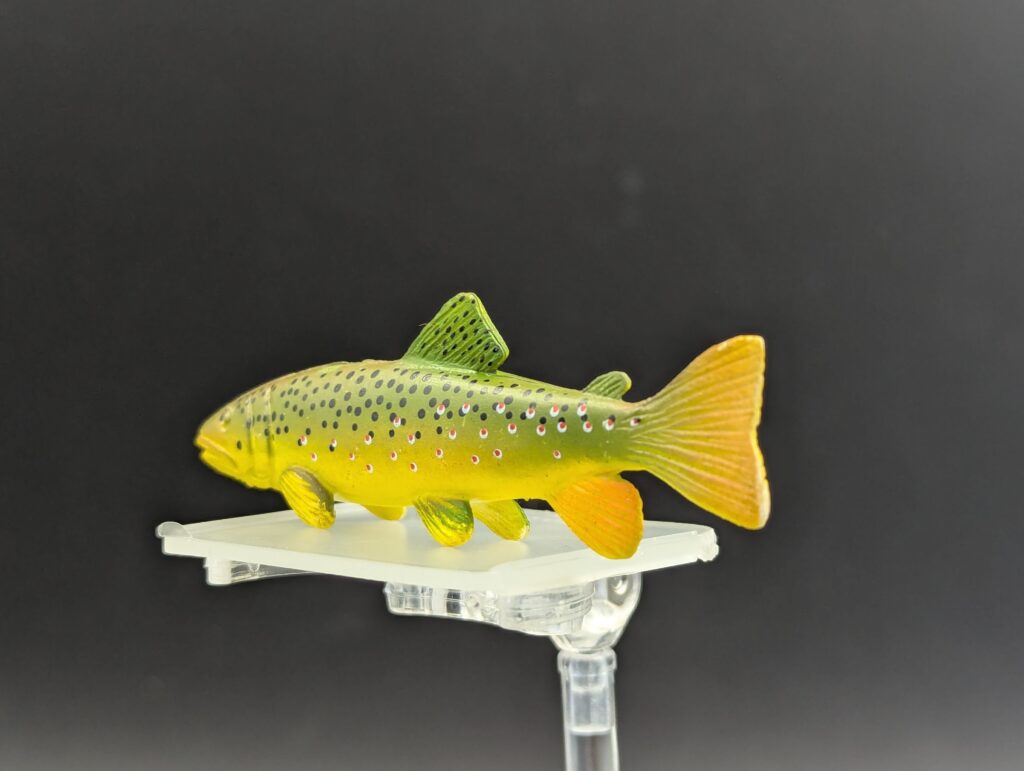
In terms of colour, the general paint job is more stylized or idealized. The back and upper sides are a dark green while the lower sides are yellow (and the belly is white of course). The fins are painted according to placement, with the dorsal and adipose in green, and the pectoral and pelvic fins mostly yellow, with some green. While actual brown trout may have some greenish or yellowish tones, they’re usually more silverish or lightly brownish (especially on the belly). The tail and anal fin are also mostly yellow, with some orange highlights. The paint is a little sloppy, with some green blotching on the anal fin. For the pattern on the body, that’s where it gets complicated, just like the real fish. As in the real fish, the dorsal fin is covered in tiny black dots, and these also carry along the back and sides within the green paint; this does reflect the pattern on the real fish. Interspersed along the sides are the characteristic ‘halo’ markings, at least as well as they could make. On the figure, these are red spots ringed in white. In the real fish, we’d expect a lot more of these larger dots with reddish or bluish within the white, and fewer black speckles. It’s not terrible, and for the level of the figure it’s okay. At least it stands as characteristically ‘brown trout’ out when viewed against the other trout species from Replica Toy Fish.
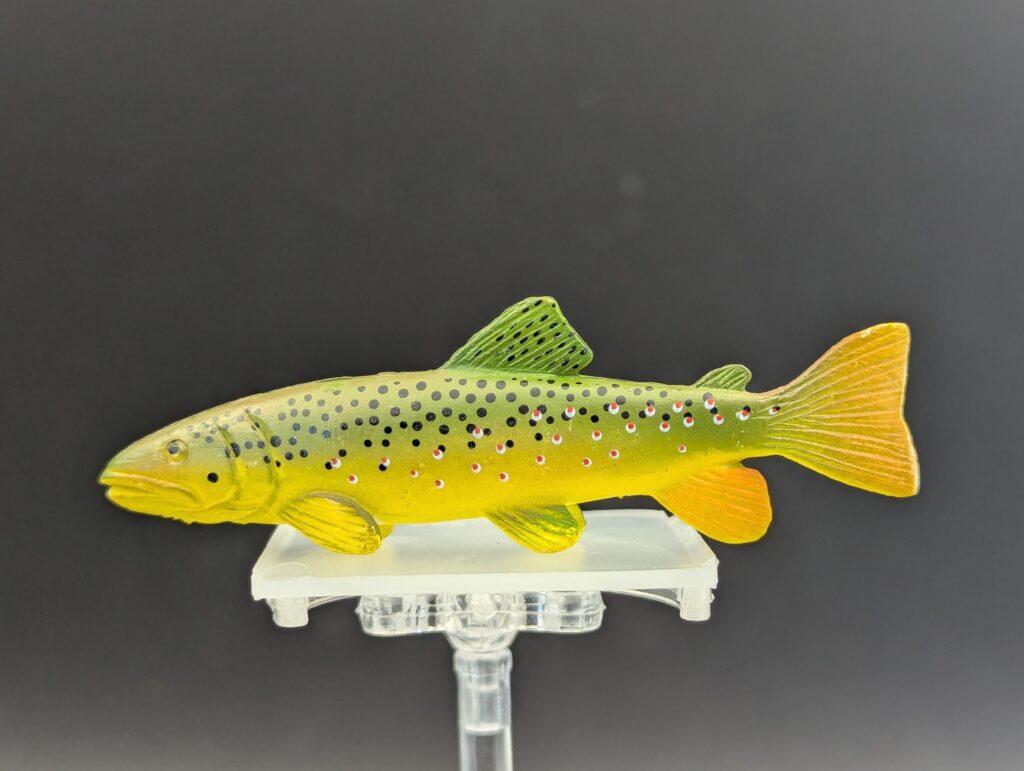
For a fish that is very familiar in Europe and worldwide, it’s surprising that there aren’t any really ‘definitive’ other figures of this species. Especially given the unique markings, they would truly stand out. Even sets that supposedly include the species don’t demonstrate it (it is admittedly tricky for small figures but would be possible). I recall when this figure came out, it was a bit of a surprise, and despite not being a truly North American species, for a company that was especially interested in species of interest to anglers, brown trout would be a given. The figure was also a hint to what the largest batch of later releases would eventually be…but there’s a lot of figures before then!
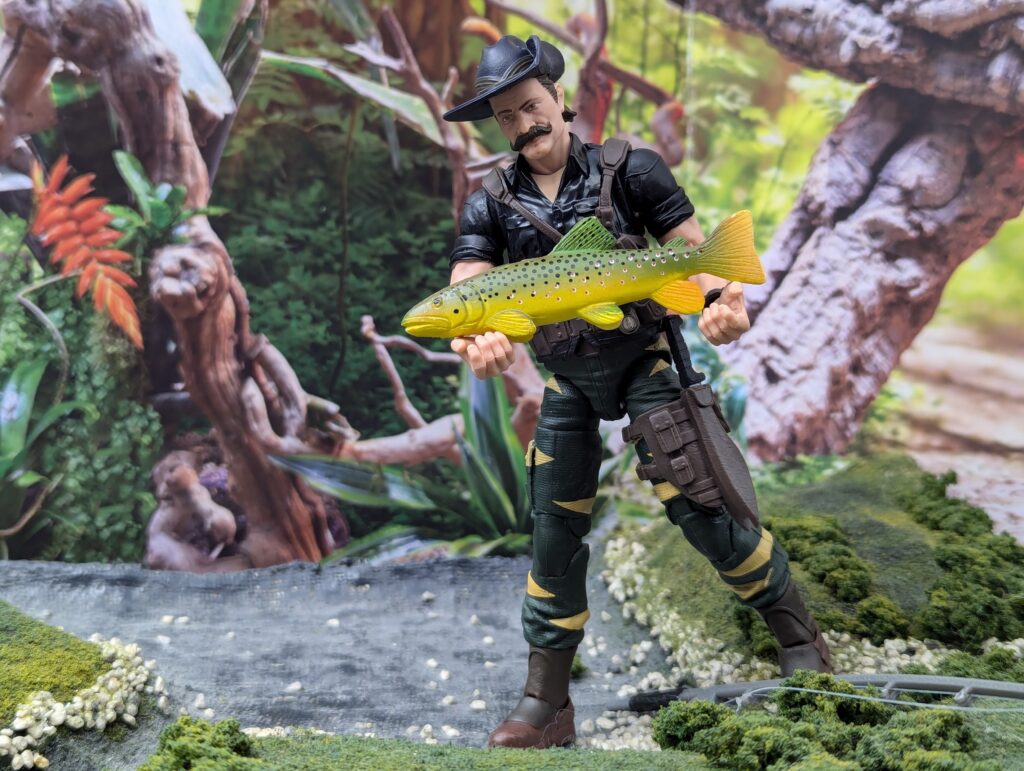
Disclaimer: links to Ebay and Amazon on the AnimalToyBlog are affiliate links, so we make a small commission if you use them. Thanks for supporting us!



